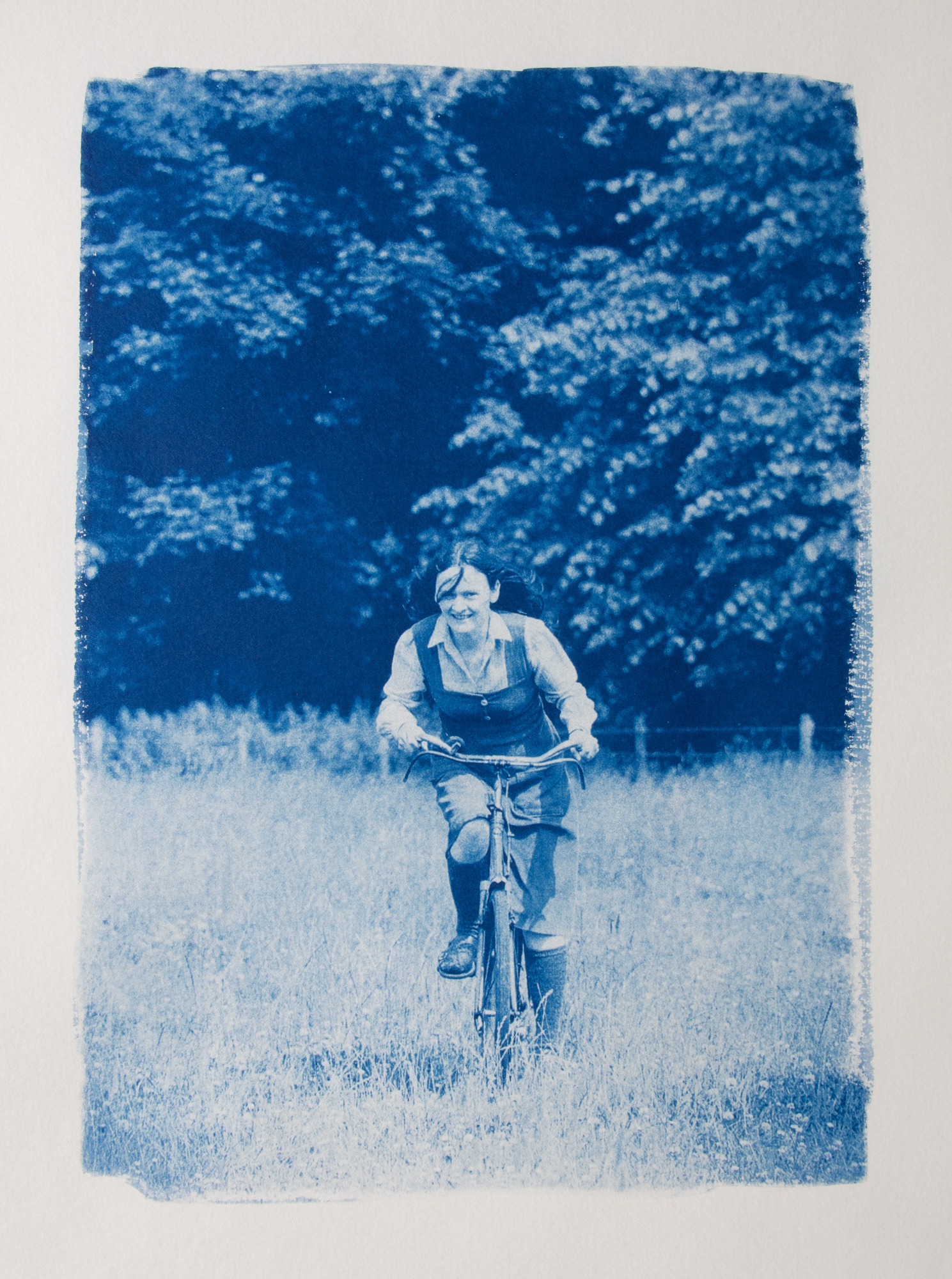The Cyanotype process was invented by Sir John Hersechel in 1842 when he discovered that a mixture of Ferric Amonium Citrate and Potassium Ferricyanide solutions became a light sensitive emulsion which yielded blue images. His goal was to create a process for copying his scientific notes and cyanotypes continued to be used to copy engineering and architectural drawings until the mid 20th Century, hence the term "blueprint".
Anna Atkins a botanist used cyanotypes to produce photograms of algae and produced 3 volumes between 1843 and 1853. and is credited with producing the first photobook.
Cyanotype is an ideal alternative process for photographers: the chemicals are relatively cheap and, with appropriate precautions, safe to use. The resulting images are stable provided they are kept out of direct sunlight and away from alkali substances. Some people choose to tone their cyanotypes, often with tea or coffee, to change the colour from blue, usually to brown but I prefer mine in the traditional blue.
I create my cyantotypes from digital negatives using a home made contact printing frame and an led uv light unit - you can find details of my printing frame and uv light here. To learn how to make cyanotypes I used the book Cyanotype: The Blueprint in Contemporary Practice by Christina Anderson ISBN-10: 1138338834. As well as information on papers and techniques it also includes inspirational examples from current practictioners.

YewTree

The Mulberry Beetle, Aldwick

Girl on a bike #1

Girl on a bike #2

Floods, Pulborough

Bladder Wrack Photogram
